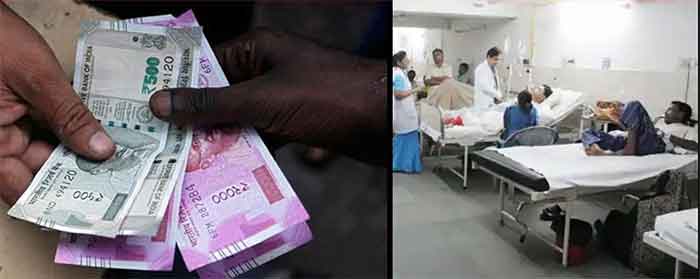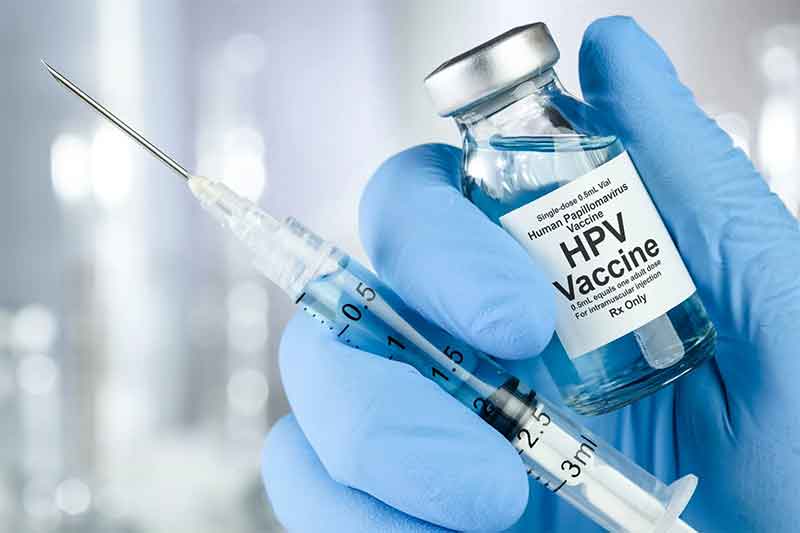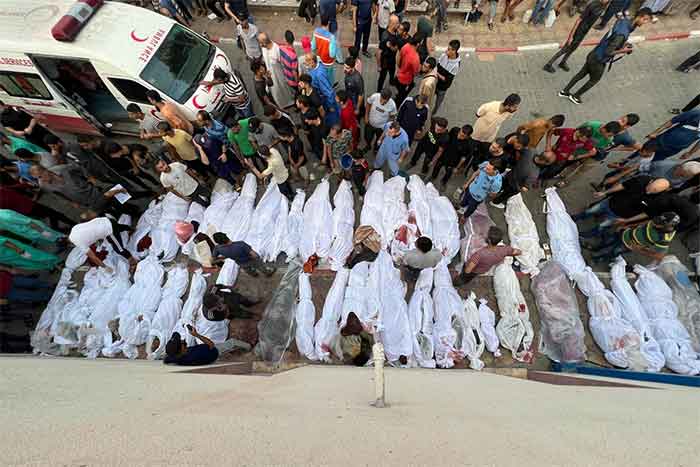Co-Written by Iffat Jahan Azhar Prof. Mohammad Akram

According to World Health Organisation (WHO), healthcare services, all over the world, aim to ensure that necessary services are accessible to people at affordable prices. But it seems different in low and middle income countries including India, where government’s spending on healthcare is very little and healthcare financing is heavily relying upon out-of-pocket expenditure made by individuals. In India, healthcare services are provided by public as well as private sectors. However, the share of the private health sector is much more than the public sector in the overall utilization of health services in India due to lack of facilities provided in public sector, low health expenditure by the government and highly developed private health care sector.
India’s total health care spending is 3.6% of Gross Domestic Product (GDP) as per the Organisation for Economic Co-operation and Development (OECD) in 2018. According to latest budget, the government expenditure on healthcare is only 1.6% of the GDP in FY20, while the National Health Policy in 2017 proposes to increase this to 2.5% of the GDP by 2025. However, India’s public health expenditure is amongst the lowest in the world. According to Hooda, low and inadequate public spending in health sector has been a generic problem of India. In a recent period, the spending level is noticed to be lower than the required level of resources; in fact, it cannot even meet the minimum level of basic healthcare facilities in the country (Hooda, 2015).[1] Low investment in health by Indian government is unable to cover the full spectrum of healthcare needs. This has resulted in low utilization of public healthcare facilities. According to NITI AAYOG report, the country’s health system lags behind many comparable countries on multiple dimensions including public financing for healthcare, level and depth of health insurance coverage as measured by household exposure to out-to-pocket expenditure to health.[2]
Indians are the sixth biggest out-of-pocket (OOP) health spenders in the low-middle income group of 50 nations, as IndiaSpend reported in May 2018.[3] As per the latest National Health Accounts (NHA) 2016-17, the OOP expenditure as a percentage of total health expenditure has declined from 64.2% in 2013-14 to 58.7 in 2016-17 but still dominates in India.[4] This high share of OOP health expenditure imposes an extreme financial burden on households because the fees and cost of treatment is very high in private facilities and unaffordable for people with low income. However, this OOP health expenditure is constraining expenditure on other necessities and leading to a loss of welfare both at micro (household) and at macro (national) levels (Garg & Karan, 2008).[5] OOP expenditure on health is one of the biggest reasons for people falling into poverty in India.
According to National Sample Survey Organisation (NSSO) 71st round, held in 2014, the cost of hospitalisation in a private facility increased 4.2 times as compared to that in a public facility. New data from the National Health Accounts (NHA) published by the union health ministry reveals that medicines are the biggest financial burden on Indian households. According to National Health Profile 2018, around 43% of the total OOP spending went in buying medicines. Because of the shortage of medicine in most of the public health facilities patient are forced to buy it from private pharmacies with their own money. According to Ladusingh & Pandey, the high OOP health care expenditure expose households to substantial financial risk and in extreme situation can push households to poverty.[6] Hence, health cost keeps people poor, and push those just above the poverty line back into poverty. Evidence shows that medical poverty owing to high OOP expenditure increased from 32.5 million in 1999–2000 to 50.6 million in 2011–12. Every year, 3.5 to 6.2% of the population of India is pushed into poverty due to high OOP expenditure (Dash & Mohanty, 2019).[7]
The main causes of high share of OOP health expenditure in India is low government allocation for healthcare. However, government often projects low coverage of health insurance in India as the main cause of high OOP expenditure. Health insurance is often seen as means to finance household healthcare expenditure. It provides financial protection to the population from being trapped in poverty. But NSSO’s 75th report shows that less than 20% of the population is covered by health insurance in India. That is, only 14.1% in rural areas and 19.1% in urban areas had any form of health coverage.[8] This leaves the vast majority of Indians exposed to health related financial shocks. Hence, more than 80% of the population pays from their pocket at the time of healthcare services. Patients end up spending out of their pockets on medicines, doctors’ fees, bed charges, diagnostic tests, drugs at public and private hospitals and pharmacies despite various public healthcare schemes. This high OOP payment for healthcare and lack of comprehensive insurance coverage has exposed vulnerable households to the risk of impoverishment.
With this healthcare system, India is currently facing coronavirus pandemic. Shortage in medical care facility centres, medical supplies and inability to provide adequate testing are the major medical issues of concern. Loss of employment and reverse migration of lackhs of workers from the major cities have become other serious problem caused by Covid-19 and the consequent abrupt lockdowns. Governments are trying to expand facilities to deal with this situation.[9] Though the government of India has made some efforts to rationalize the treatment price in case of Covid-19 cases by coming out with the package for Covid-19 under Ayushman Bharat,[10] but those who are not covered under this scheme have a fear of burden of Covid-19 treatment cost because data shows that the average treatment cost in the case of Covid-19 is very high in private hospitals. Even a single test of Covid-19 costs Rupees 4,500/- in private labs. Trapped between reductions in income and often complete loss of employment due to lockdown and the state of not having any insurance coverage, the lower as well as middle income families either go to over-burdened government facilities for treatment or get pushed under poverty while seeking treatment in private hospitals or even completely get perished. Many just don’t have the privilege of even thinking of a proper medical care.
At this point of time it is a reminder that government needs to rapidly introduce several large scale interventions to increase the income of the lower and lower-middle classes by offering direct employment opportunities or compensatory income benefits along with increasing the spending in healthcare and standardising the hospital packages for all morbidities including Covid-19 patients so that those without enough income or health insurance coverage could not be exploited with excessive high pricing by private medical care and can think of getting the most necessary medical care.
*Iffat Jahan Azhar is a Ph.D. Research Scholar at the Department of Sociology, Aligarh Muslim University, Aligarh, India. Email: [email protected]
** Prof. Mohammad Akram– is Professor of Sociology at Department of Sociology, Aligarh Muslim University, Aligarh, India. He has five published books and several research papers to his credit. He has worked on areas of sociology of health, migration, work, education and social policies. He is engaged in the profession of teaching, research and supervision for more than twenty years. He is an elected member of the managing committee of Indian Sociological Society (ISS). Email: [email protected]
[1] Hooda, S.K. (2015). Private sector in healthcare delivery market in India: Structure, Growth and Implications. http://isid.org.in/pdf/WP185.pdf
[2] Niti Aayog Report (2019)
https://niti.gov.in/sites/default/files/2019-11/NitiAayogBook_compressed.pdf
[3] Yadavar, S., (2018) Rs 3: Amount India Spends Every Day On Each Indian’s Health. IndiaSpend
[4] National Health Accounts (NHA) 2016-17
[5] Garg, CC., & Karan, AK. (2009). Reducing out-of-pocket expenditures to reduce poverty: a disaggregated analysis at rural-urban and state level in India. Health Policy Plan. 24(2):116–28
[6] Ladusingh, L., & Pandey, A. (2013). Health expenditure and impoverishment in India. Journal of Health Management, 15(1), 57–74. https://doi.org/10.1177/0972063413486031
[7] Dash, A., & Mohanty, SK. (2019). Do poor people in the poorer states pay more for healthcare in India? BMC Public Health. https://doi.org/10.1186/s12889-019-7342-8
[8] National Sample Survey 71st round (2016) and 75th round (2019) http://www.mospi.gov.in/sites/default/files/NSS75250H/KI_Health_75th_Final.pdf
[9] Bhardwaj A., (2020) COVID-19:A bigger challenge to the Indian healthcare system. Developing Economics.
[10] Maurya D., (2020) Need for a standardized hospital treatment package for COVID-19. Express healthcare.
SIGN UP FOR COUNTERCURRENTS DAILY NEWS LETTER















































